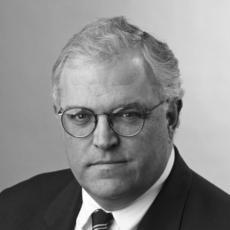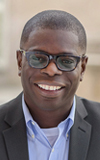Immerse Yourself
I’m quite sure that the September 2016 LGBTQ Funders’ Immersion Trip in Cleveland organized by Funders for LGBTQ Issues was as beneficial to me - a hometown, place-based grantmaker – as it was for those coming here from other places around the country. The two-day visit that occurred a few months back continues to affect my outlook and is likely to have an impact on my work for a long time to come.
The tour refreshed my knowledge of the extraordinary contributions made by the LGBTQ community to Cleveland’s vitality. It reinforced my understanding that Ohio has yet to afford LGBTQ citizens the full complement of non-discrimination protections available to others in fully recognized protected classes. More than half of LGBTQ Americans live in states where it is generally legal to be fired, evicted, or refused service in places like restaurants and movie theaters solely on the basis of LGBTQ identity – and Ohio is one of those states.
Nelson Beckford a fellow colleague and Senior Program Officer for A Strong Neighborhood at Saint Luke’s Foundation had this to say about his immersive experience:
“I’ll admit this - I had a naïve understanding of the LGBTQI community. In my mind, this community was a monolith – a unified front against oppressive thinking, systems and institutions.
I was surprised (and honored) when the immersion organizers asked me to moderate the panel on “Queering the Neighborhood,” which dove into a nuanced conversation about the relationship between neighborhoods and the safety, visibility, and quality of life for LGBTQ residents.
The panelists included a realtor, a community organizer from an east side settlement house, the outreach coordinator for the LGBT Center, and a trans rights advocate/ DJ. Each speaker gave their unique and heartfelt testimony on the complexities of the topic.
Suffice to say, this black Cisgender male became more aware of the intersection between race, gender, class, and place. For example, some of Cleveland’s hottest neighborhoods are branded as gay friendly (read: professionally employed gay white males). However, if you are a transgender minority youth of lower income - no such welcome mat exists. In fact, many doors are closed. Even worse, you may be met with hostility or even violence. There were moments during the session that I was speechless. I did not get the concept of intersectionality - until now.
I was made more aware (or less naïve) about the challenges in creating truly inclusive and truly equitable neighborhoods.”
Statements such as this remind us that LGBTQ issues along with sustained learning opportunities must remain on the agenda in order to improve our local communities and create a more equitable society.
The topic of diversity, equity and inclusion is now being explored with a real sense of urgency by grantees (such as Cleveland Neighborhood Progress and the Fund for Our Economic Future) and fellow funders (specifically through our regional association, Philanthropy Ohio) with whom I work closely. Race, class and gender are always at the forefront of these discussions. It goes to show how impactful it can be to carve out time to authentically immerse yourself in an issue and give yourself the space to learn from other local and national organizations. How might you integrate a similar learning experience into your work?
This post is part of an ongoing blog series detailing Out in Ohio: An LGBTQ Funders’ Immersion Trip in Cleveland which took place on September 8-9, 2016 and was sponsored by the national affinity group, Funders for LGBTQ Issues, and led by local LGBTQ funding ambassadors Kristi Andrasik, The Cleveland Foundation and Brian Schultz, Foundation Center Midwest.


